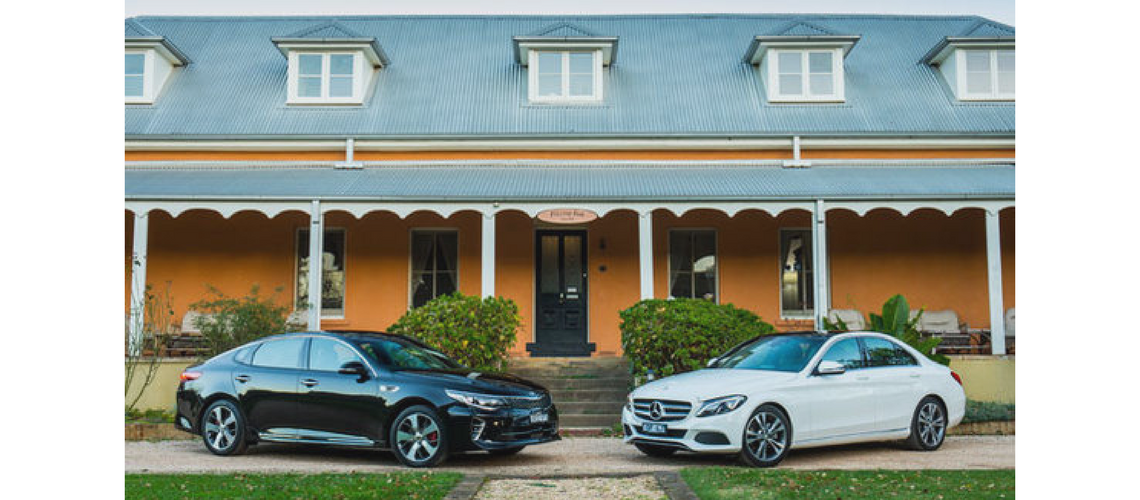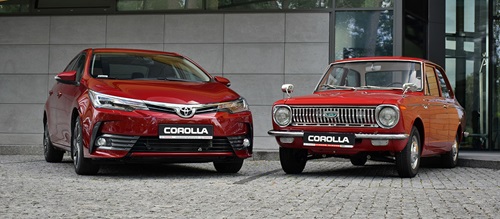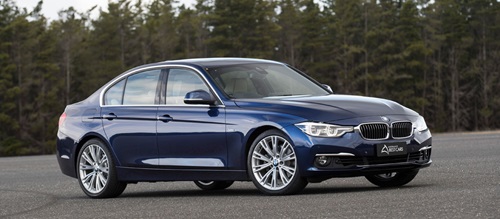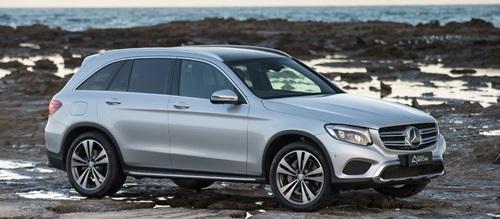Comfort and convenience
The Kia's seats, front and rear, are better shaped, making them more comfortable than those in the Mercedes, even though the German car has adjustable thigh support. Both vehicles have heated seats, but only the Kia has front seat cooling, which is a big plus in the Australian market. A splay-footed driver like your author also appreciates the extra foot room you get in the Kia. The Mercedes has keyless ignition, but not keyless entry – a huge omission at this price point.
Space and practicality
The Optima is a substantially bigger car than the C200, so it has more space where it counts. Its boot is larger in every direction and the back seats offer much better foot, leg and shoulder room. The C200's glove box is smaller than the Optima's and doesn't open very wide. But the Optima's cup holders come off second best because those in the door pockets don't hold taller bottles very well, whereas the C200's are unobstructed.Ergonomics
The Optima has a more upright and comfortable driving position than the C200, although that can be a personal preference – both cars are good for a long stint behind the wheel. And the C200's door handles are positioned a little too far rearward, meaning they are not comfortably to hand when exiting.The Kia's simple combination of buttons, dials and a large touchscreen makes operating everything – from the sat nav to the cruise control – a stress-free exercise. The Mercedes retains its traditional console dial system and has added a mouse-like touchpad on top of it. Much like the infotainment menu it controls, this system is unnecessarily complicated and a bad case of form over function.On first inspection, the Mercedes C200 and Kia Optima seem to have similar levels of functionality. Both have sat nav, digital radio, Bluetooth connection for your phone and music, and plenty of trip information (fuel consumption, digital speedo, trip meter and more).
It's only when you begin to dig down into the Merc's menu that you realise how much more customisable it is than the Kia. You can, for example, change the C200's mood lighting to blue or orange (an optional extra on our test car) or adjust the ride and engine mapping to suit your preferences.
It's just a shame it's operated via Mercedes' dial and touchpad combo, which is the equivalent of using 20 words to describe something when two will suffice. Whether you need to turn the dial, move the dial, click the dial, or click the buttons at the back of the touchpad will depend on where you are in a menu.
The system's drawbacks become even more obvious when trying to enter an address in the sat nav. With the Optima's touchscreen, you type it in. With the C200, you have to twist the dial to each letter and click it, sometimes overshooting the one you want because the dial is too sensitive. Make a mistake with the Optima and you press the backspace button, while the C200 forces you to navigate to the backspace before clicking it and then navigate back to the letters. The end result is it takes half the time to enter an address in the Optima.
Safety
The Kia Optima was tested in 2015 and achieved a five-star ANCAP rating which is still current. It achieved an overall score of 33.5 out of 38 for adult protection and 42.5 out of 49 for child protection. It must be noted that the testing criteria had changed for the Kia so the scores are different between the two. The C200 was last tested in 2014 and its five-star rating from that test is still current. It did exceptionally well, achieving 15.46 out of 16 for the frontal offset test and 16 out of 16 for the side impact, helping it to reach an overall score of 36.46 out of 37.Build quality and finish
Both cars impress with rock-solid build quality, and there's a similar 'thunk' when you close their doors. Yet Mercedes reasserts its superiority in its finishes. The Kia is excellent, but the German car has softer leather, plastics that are a fraction nicer to the touch, and styling accents that lend it more class and elegance. Even the infotainment system, for all its over-engineering, has beautiful graphics.Performance
On figures alone, one would expect the Kia to have the goods here, and it does. The Korean has noticeably longer legs for any highway overtaking manoeuvre, although in day-to-day driving, there's not much difference between the two. Each has a very useful sport mode that offers better rolling acceleration, and each has an eco-mode, which leads us to our next category.Economy
Mercedes-Benz has been developing turbocharged engines for a long time and this is reflected in the C200's superior fuel economy of just 6.0L/100km. The Optima GT, by contrast, claims a figure of 8.5L/100km. That sizable difference adds up to hundreds of dollars in fuel expense annually. The Mercedes partly achieves its victory through stop-start technology, though, which continues to be a love/hate prospect among Australian drivers.Ride and handling
You're probably tired of reading that Kia tunes the suspension of its cars to suit Australian conditions but, gosh, it makes a difference. While the Merc's firmer suspension can feel 'crashy' over hot-patched roads and potholes, the Kia takes everything in its stride – in fact, I'd rate it one of the most comfortable sedans on the market. Yet, somehow Kia also imbues the Optima GT with superb handling, and it's easily on par with the Mercedes when the roads begin to twist.Refinement
It's in the details that Mercedes takes the prize for this category. The engine is a little smoother and quieter (especially when you put your foot down), the window switches are nicer to operate, the seat belts have a silkier feel when they extend or retract, and the click of the lid on the armrest storage box feels and sounds more premium. Such attributes make a differenceat any price point, but when a buyer is forking over $50,000, he or she has certain expectations. And while the Optima doesn't feel cheap, it does feel cheaper.Final thoughts
This comparison shows that badge snobbery is becoming less and less justified. While there's no doubt the Mercedes has a small edge in quality of materials, mechanical refinement and technology, the Kia has the German's measure in performance, handling, ride comfort, space and ergonomics.It also has a seven-year warranty compared to the Merc's measly three, and the indicator stalk is on the 'correct' side – which, to this Australian at least, is hugely desirable.
During our photo shoot, someone asked me what my overall choice would be. I answered, "For the money, the Kia." My interrogator shook his head dismissively and said, "Forget about the money. Which car would you buy?" I paused to consult both my head and my heart. They offered the same answer: "I'd still have the Kia."
Hard to believe, but true.











